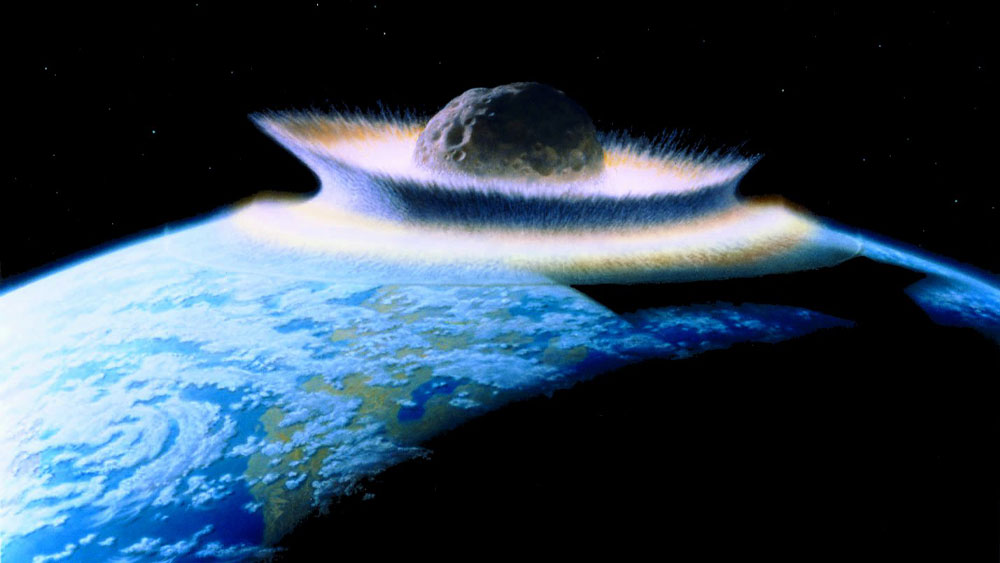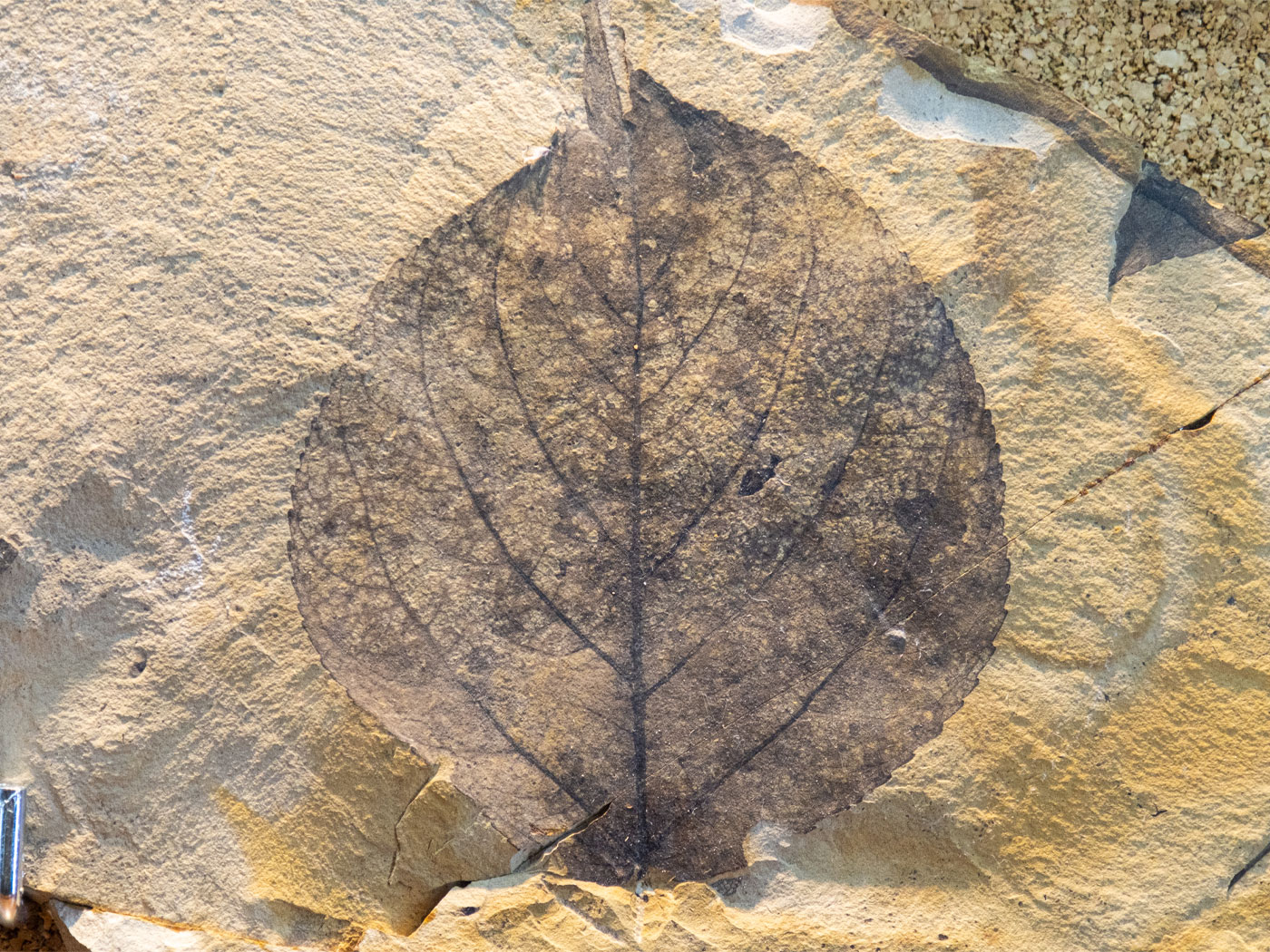A recent paper suggests that enormous volcanic eruptions in India caused climatic cooling that contributed to the extinction of the dinosaurs.1,2 Most mainstream scientists think an asteroid struck Mexico’s Yucatan peninsula 66 million years ago, forming the famous Chicxulub crater, and that this impact was the primary cause of the extinction of dinosaurs.3 However, this new paper suggests there may be other factors, such as cooling due to massive volcanic eruptions, that played a role. This is a reminder that, despite popular perception, the impact theory of dinosaur extinction has problems and is still a source of contention among even conventional scientists.4,5
One problem with the impact theory is that many animals, such as slow-moving tortoises, sensitive frogs, and relatively fragile birds, that would be expected to be adversely affected by a giant impact survived. Why?
A second problem is that evolutionary paleontologists have reported finding dinosaur fossils in rocks that are, by old-Earth reckoning, less than 66 million years old.5–9 The timing of the asteroid impact is thought to be marked in the rocks at the K-T or K-Pg boundary, which marks the transition from Cretaceous rocks to younger rocks referred to as Tertiary or Paleogene. This would imply that the dinosaurs did not suddenly go extinct at the time of the impact. Not too surprisingly, such reports are ignored, forgotten, or explained away.9,10
All over the globe we find dinosaurs and other fossils in water-deposited strata that later hardened into rock. Despite uniformitarian claims to the contrary, these rocks and fossils are best explained by the Genesis Flood that covered the earth about 4,500 years ago. All the air-breathing, land-dwelling creatures outside the Ark perished. However, the representatives of these animals that God brought on board the Ark, including dinosaurs, survived, reproduced, and spread across the Earth after the Flood. Many ancient peoples wrote about and described what appear to be dinosaurs, even though they called them by other names, e.g., dragons.11 In the creation Flood model, impacts may have hit the earth during the Flood, but none of them caused the dinosaurs to go extinct.
Also, research by ICR geologist Dr. Tim Clarey suggests that the so-called Chicxulub crater may not have even been caused by an asteroid, or at least not by a large one.12 For one thing, there’s not nearly enough melted rock to support a large impact at the site.12 Second, the “impact crater” is a gravity anomaly and is not based on any physical evidence at the surface. Most, if not all, of the evidence cited in favor of an impact has alternative explanations. The apparent circularity of Chicxulub is not necessarily proof of an impact, since crater-shaped features can also be caused by volcanoes and calderas. Likewise, the high concentration of iridium found near the K-Pg boundary, cited as evidence for an impact, is more “spread out” in time (multiple layers) than would be expected if it were caused by an impact alone. Large lava flows originating from deep within the earth’s mantle can also cause iridium “spikes.” And there are only three cores out of about 10 taken at the Chicxulub site that detected any iridium at all.12 Indeed, the volcanism in western India described in this very research has been proposed as a possible source for much of the iridium found at the K-Pg.4
As this paper shows, both uniformitarian and creation geologists agree that enormous volcanism has taken place in Earth’s past, and both recognize that sulfur-rich explosive eruptions can cause significant summer cooling.2 In a Flood Ice Age model, this summer cooling is needed to prevent nascent ice sheets from melting during the summer months. However, the evolutionary belief in “millions of years” prevents the authors of this most recent study from making good use of this volcanic cooling in their theories. Because they believe these eruptions were separated by millions of years, any potential cooling effect would have been greatly diluted. But if these eruptions occurred in close succession during and shortly after the Genesis Flood, then they provide a potent Ice Age cooling mechanism. Likewise, heating from rapid creation of an entirely new seafloor of lava during the Flood would have greatly warmed the world’s oceans, resulting in greatly increased sea surface evaporation that produced enormous amounts of moisture in the atmosphere. This resulted in greatly increased precipitation, including heavy snowfall at high latitudes and elevations. This heavy snowfall triggered the Ice Age, and continued summer cooling from residual post-Flood eruptions prevented the snow and ice from melting, enabling the formation of thick ice sheets.13
The Bible’s short timescale of thousands of years and the Genesis Flood, both affirmed by the Lord Jesus Himself,14 are not embarrassments for which Christians should sheepishly apologize but are actually the keys to making sense of Earth history.
References
- More than a meteorite: New clues about the demise of dinosaurs. ScienceDaily. Posted on sciencedaily.com December 4, 2023, accessed December 7, 2023.
- Callegaro, S. et al. 2023. Recurring volcanic winters during the latest Cretaceous: Sulfur and fluorine budgets of Deccan Traps lavas. Science Advances. 9 (40): 1–11.
- Uniformitarian scientists long claimed that dinosaurs went extinct 65 million years ago, but that age has since been revised to 66 million years.
- DeYoung, D. B. 2001. Chicxulub and the Demise of the Dinosaurs. Acts & Facts. 30 (4).
- Sloan, R. E. et al. 1986. Gradual dinosaur extinction and simultaneous ungulate radiation in the Hell Creek formation. Science. 232 (4750): 629–633.
- Rigby, J. K., Jr. et al. 1987. Dinosaurs from the Paleocene part of the Hell Creek Formation, McCone County, Montana. Palaios. 2 (3): 296–302.
- Thomas, B. 2009. Rewriting the Last Dinosaur’s Tombstone. Creation Science Update. Posted on ICR.org May 11, 2009, accessed December 7, 2023.
- Fassett, J. E. 2008. New geochronologic and stratigraphic evidence confirms the Paleocene age of the dinosaur-bearing Ojo Alamo sandstone and Animas Formation in the San Juan Basin, New Mexico and Colorado. Palaeontologica Electronica. 12 (1): 3A.
- Bucks, B. J. et al. 2004. “Tertiary Dinosaurs” in the Nanxiong Basin, Southern China, are reworked from the Cretaceous. Journal of Geology. 112: 111–118.
- Oard, M. J. 2011. Taxonomic manipulations likely common. Journal of Creation. 25 (3): 15–17.
- Thomas, B. 2017. Dinosaurs and Dragon Legends. Acts & Facts. 46 (7): 14–16.
- Clarey, T. Chicxulub Crater Theory Mostly Smoke. Creation Science Update. Posted on ICR.org May 31, 2017, accessed December 7, 2023.
- Hebert, J. 2018. The Bible Best Explains the Ice Age. Acts & Facts. 47 (11): 10–15.
- The Lord Jesus affirmed the Genesis Flood in Luke 17:26–27, and He implicitly affirmed a recent creation in Mark 10:6, Mark 13:19, and Luke 11:50–51.
* Dr. Hebert is Research Scientist at the Institute for Creation Research and earned his Ph.D. in physics from the University of Texas at Dallas.




















